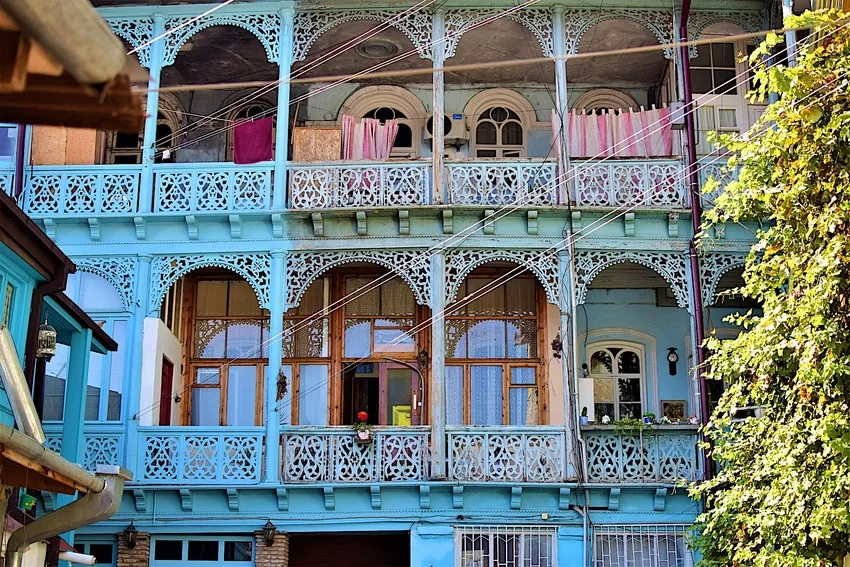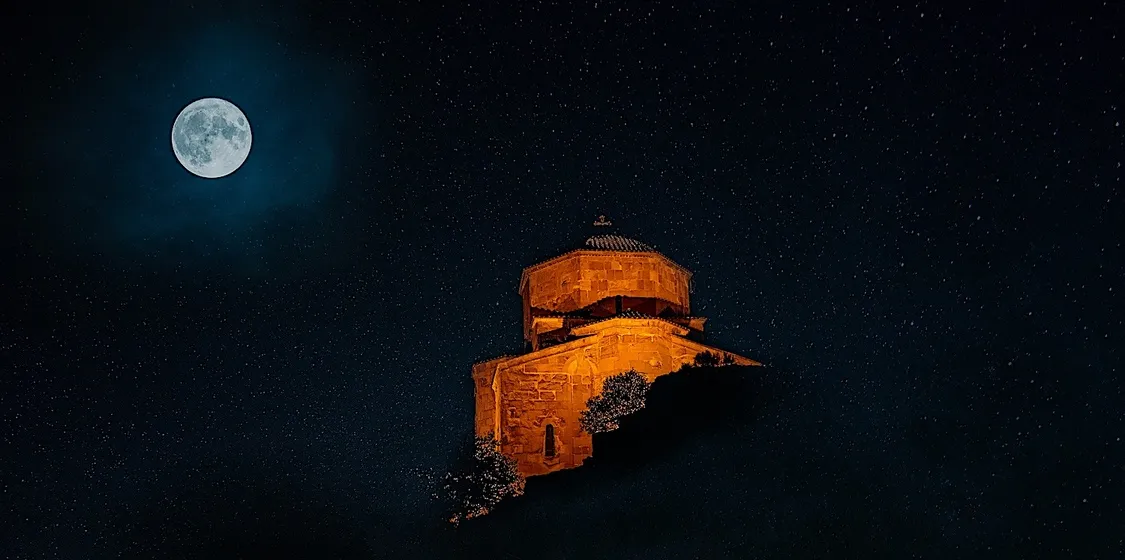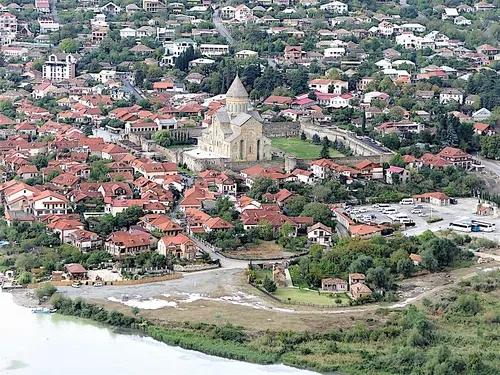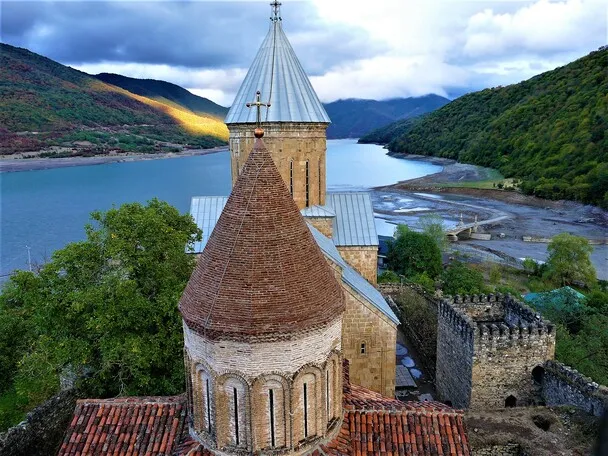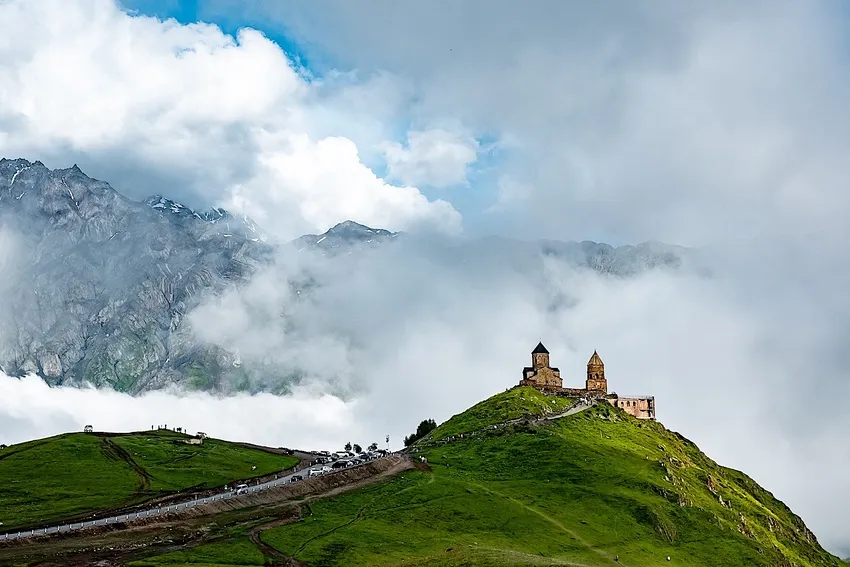-
Authentic Places
Bodbe Nunnery
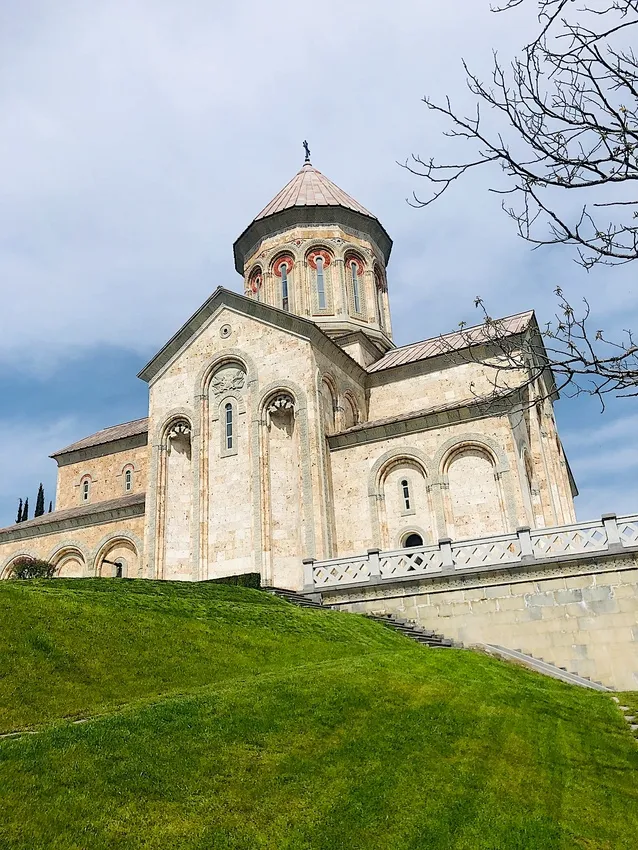
A place connected with a person who is very special for all Georgians. Her name was Nino, and she brought Christianity to Georgia in 437 A.D. If you have any idea how important religion is for Georgians, you will understand how important a convent of Saint Nina is for Georgians. The place is called Bodbe. It is located 2 kilometers from Sighnaghi and 110 kilometers from Tbilisi. Bodbe is a place where Saint Nina is buried and a pilgrimage destination for many Christians around the world. Bodbe has equally mesmerizing views of Alazani Valley and the Greater Caucasus Mountain Range, as well as a beautiful garden with an abundance of flowers and plants. The convent consists of several buildings: the chapel of Saint Nina, where the burial is; the new church of Saint Nina; the bell tower from the 19th century; and the living quarters of the nuns. There is a small shop and a café called Pilgrim, where one can find local produce. The living quarters of the nuns are closed to visitors; however, they can visit all the other buildings mentioned above. For those who believe in special places with healing powers, they can visit the spring of Saint Nina. It is located several hundred meters from the convent and represents a pool of holy water. Many Georgians believe in the healing and blessing characteristics of this water. So if you want to feel like a real local or experience the healing properties of the holy water of Bodbe, try the spring. You can access the spring by taking a stroll from the convent of Bodbe or by driving directly to the springs.
The convent has a long and difficult past. It was built in the 4thcentury A.D. for the burial of Saint Nina. It had always been an important place of worship; however, in the times of the Russian Empire, it was rearranged as a boarding school for noble ladies and, in Soviet times, as a hospital. Furthermore, it served as a hospital for several decades, and the belongings of the nunnery were used as daily items. The miraculous icon of Mother Mary of Iveria, the one that you can find today in the church of Bodbe, was used as a desk in those times.

